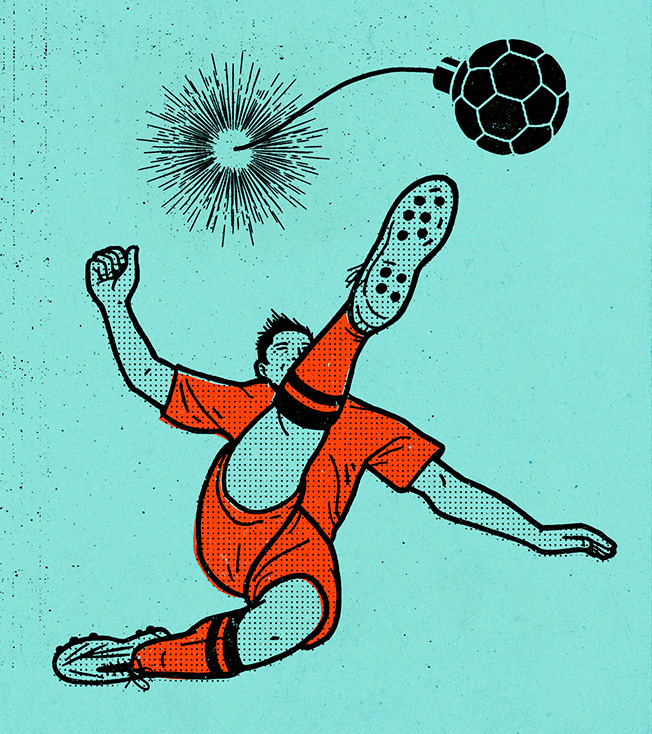Inspiration meets innovation at Brandweek, the ultimate marketing experience. Join industry luminaries, rising talent and strategic experts in Phoenix, Arizona this September 23–26 to assess challenges, develop solutions and create new pathways for growth. Register early to save.
When contemplating investing millions of dollars a year in a global brand-building sponsorship, marketing leaders have to consider many things: the big picture issues like reach, scale, audience and relevance as well as the more tactical things like product tie-ins, licensing and logo placement.
What to do when your brand logo appears next to photos of perp walks and headlines about corruption indictments and RICO charges isn't generally one of those considerations. But for many large companies around the world, that's exactly what they've been contemplating over the last few weeks as they consider their relationship with FIFA, the embattled world soccer organization.

David Melançon
While at least one sponsor—Visa—threatened to walk almost immediately, most of the others, including Adidas, Coca-Cola, Hyundai and InBev/Budweiser issued statements of varying strength; each of them expressing concern, while doing a bit of a shuffle in order to protect their brands—but still not losing a valuable sponsorship investment. So beyond the usual metrics, what else could a global corporation consider that might preclude this sort of reputational disaster? Here are four things:
Consider values as carefully as impressions. Good companies are built on values and principles first; in better companies, these values are brought to life in the way the company brings products to market, the way it hires and manages people and the way it comports itself in the marketplace. When considering a sponsorship or partnership, companies should carefully consider whether or not the potential partner's values are in line with their own.
This means looking beyond the media kit, audience demographics and impression numbers, and considering whether or not the organization believes in the same things the corporation believes in—that they approach the marketplace and the world in the same way, and that they demonstrate this in their day-to-day operations. Unless they're very new to the world of sponsorship, there will be a track record to consider.
Build value alignment and transparency into your agreement. Once a company has decided that the organization it's considering sponsoring has values—as expressed and demonstrated—that are in line with its own, the corporation can protect itself further by acknowledging this alignment and building it into the sponsorship agreement. Much like a morals clause that's included in many employment contracts, a transparent values alignment clause would ensure that, should the sponsored organization change its course (or should new information come to light), the corporation's brand and reputation has some protection.
Insist on being an active sponsor. One might believe that writing a $25 million-$50 million check each year would give a corporation a lot of rights when it comes to how an organization operates. But beyond the advertising, marketing, licensing and other "branding" rights, organizations often like to keep their sponsors away from day-to-day decisions. I had firsthand experience with this several years ago when representing an Olympic sponsor during the Summer Games. While global sponsors of the IOC were regularly polled and convened on various issues, many of the sponsoring companies felt their concerns weren't being heeded. When considering a sponsorship that will publicly tie the corporation or the brand to an outside organization, brand leaders must be given an active role in decisions that will affect their brand's value and reputation.
Band together—and stand your "values" ground. One sponsor out of several pushing back on the organization can be seen as an easily replaced troublemaker. Several world-class brand sponsors aligning together becomes a wave of change. Sponsors with concerns about the property they are sponsoring need to form alliances with like-valued companies and push the organization to make changes. In FIFA's case, if the sponsors banded together and decided to work the levers of politics and patronage in the same aggressive manner that Sepp Blatter did before exiting, they would soon see change in the organization.
Sporting events such as the World Cup are one of the best ways for global brands to connect and engage with consumers around the world. In the best of circumstances, they are also a way for brands and companies to align their values with those of the sport. Athletic prowess and talent, determination, resolve, teamwork and spirit can all provide sponsoring corporations with a shiny brand halo.
The FIFA debacle shows that "lack of values" also communicates something to the world's consumers—but what it communicates isn't wearing a halo.
This story first appeared in the July 20 issue of Adweek magazine. Click here to subscribe.
David Melançon (@DavidMelancon) is CEO/co-founder at btr. He was previously evp and CMO for Benjamin Moore and was named an Adweek Brand Genuis in 2014.








